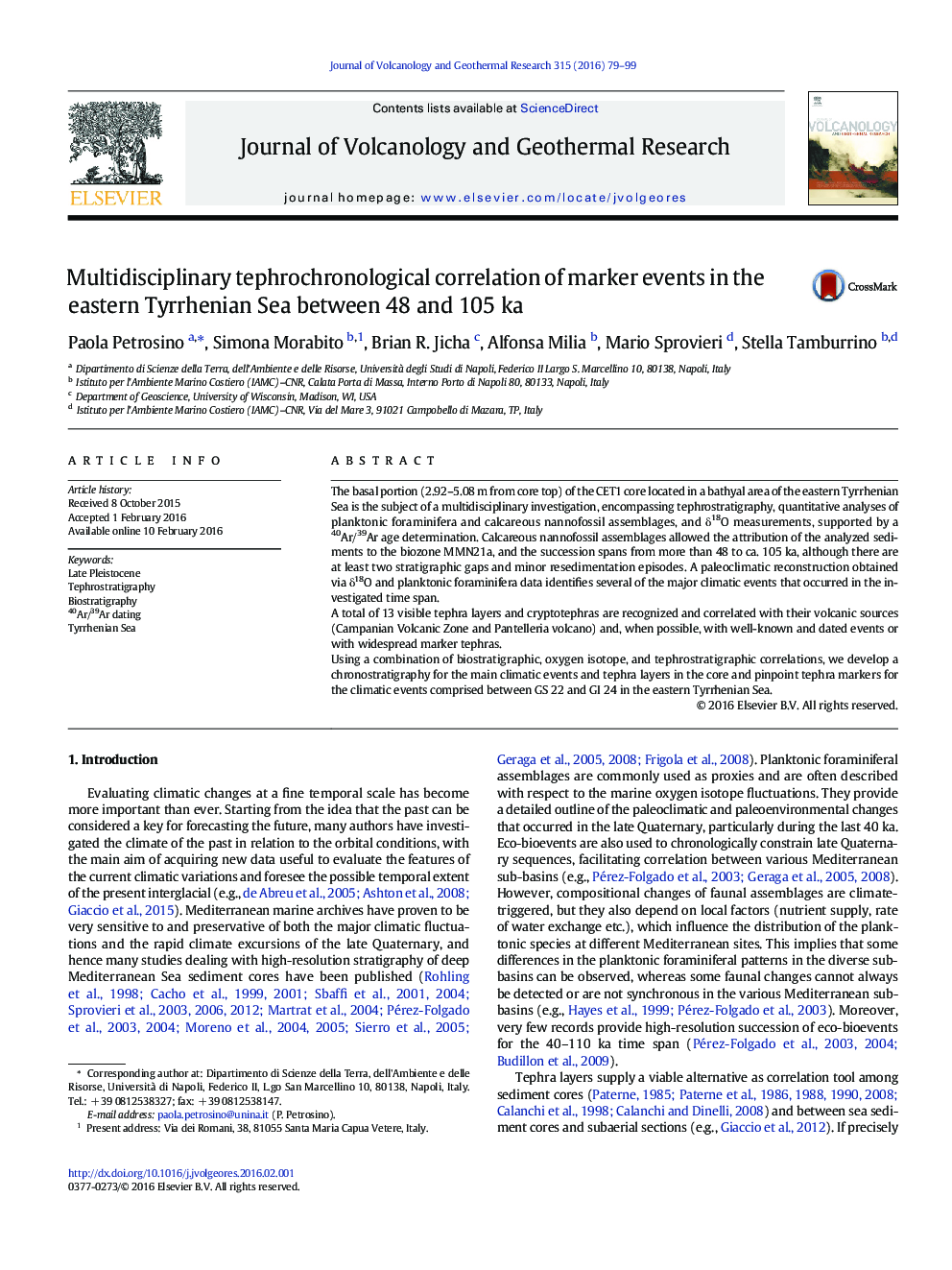| Article ID | Journal | Published Year | Pages | File Type |
|---|---|---|---|---|
| 4714161 | Journal of Volcanology and Geothermal Research | 2016 | 21 Pages |
•Biostratigraphic, tephrostratigraphic, isotope, and 40Ar/39Ar data were interrelated.•This multidisciplinary study constrains the age of the succession to 48–105 ka.•Volcanic activity in Campania was intense prior to the Campanian Ignimbrite eruption.•Several unknown tephra layers quite diagnostic for further correlations were found.•Some investigated tephra layers could be useful markers for specific climatic events.
The basal portion (2.92–5.08 m from core top) of the CET1 core located in a bathyal area of the eastern Tyrrhenian Sea is the subject of a multidisciplinary investigation, encompassing tephrostratigraphy, quantitative analyses of planktonic foraminifera and calcareous nannofossil assemblages, and δ18O measurements, supported by a 40Ar/39Ar age determination. Calcareous nannofossil assemblages allowed the attribution of the analyzed sediments to the biozone MMN21a, and the succession spans from more than 48 to ca. 105 ka, although there are at least two stratigraphic gaps and minor resedimentation episodes. A paleoclimatic reconstruction obtained via δ18O and planktonic foraminifera data identifies several of the major climatic events that occurred in the investigated time span.A total of 13 visible tephra layers and cryptotephras are recognized and correlated with their volcanic sources (Campanian Volcanic Zone and Pantelleria volcano) and, when possible, with well-known and dated events or with widespread marker tephras.Using a combination of biostratigraphic, oxygen isotope, and tephrostratigraphic correlations, we develop a chronostratigraphy for the main climatic events and tephra layers in the core and pinpoint tephra markers for the climatic events comprised between GS 22 and GI 24 in the eastern Tyrrhenian Sea.
